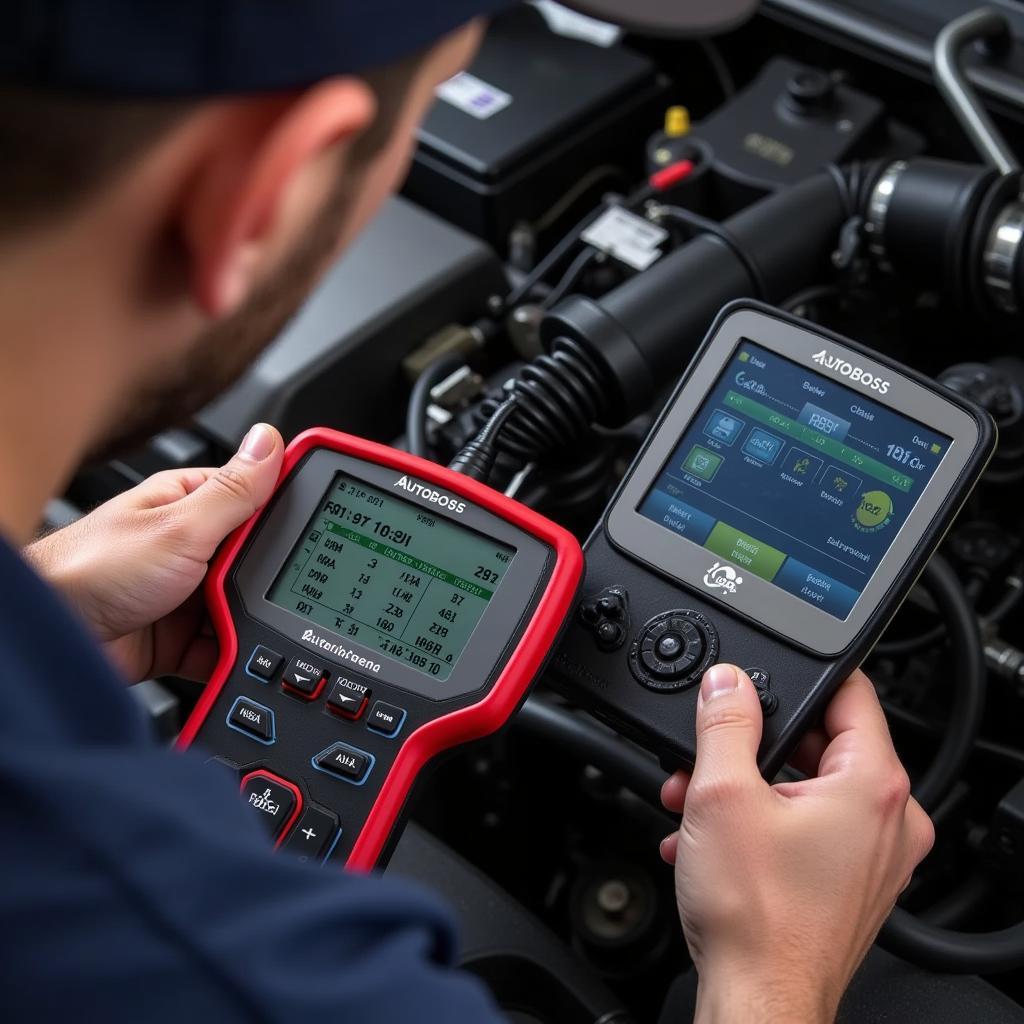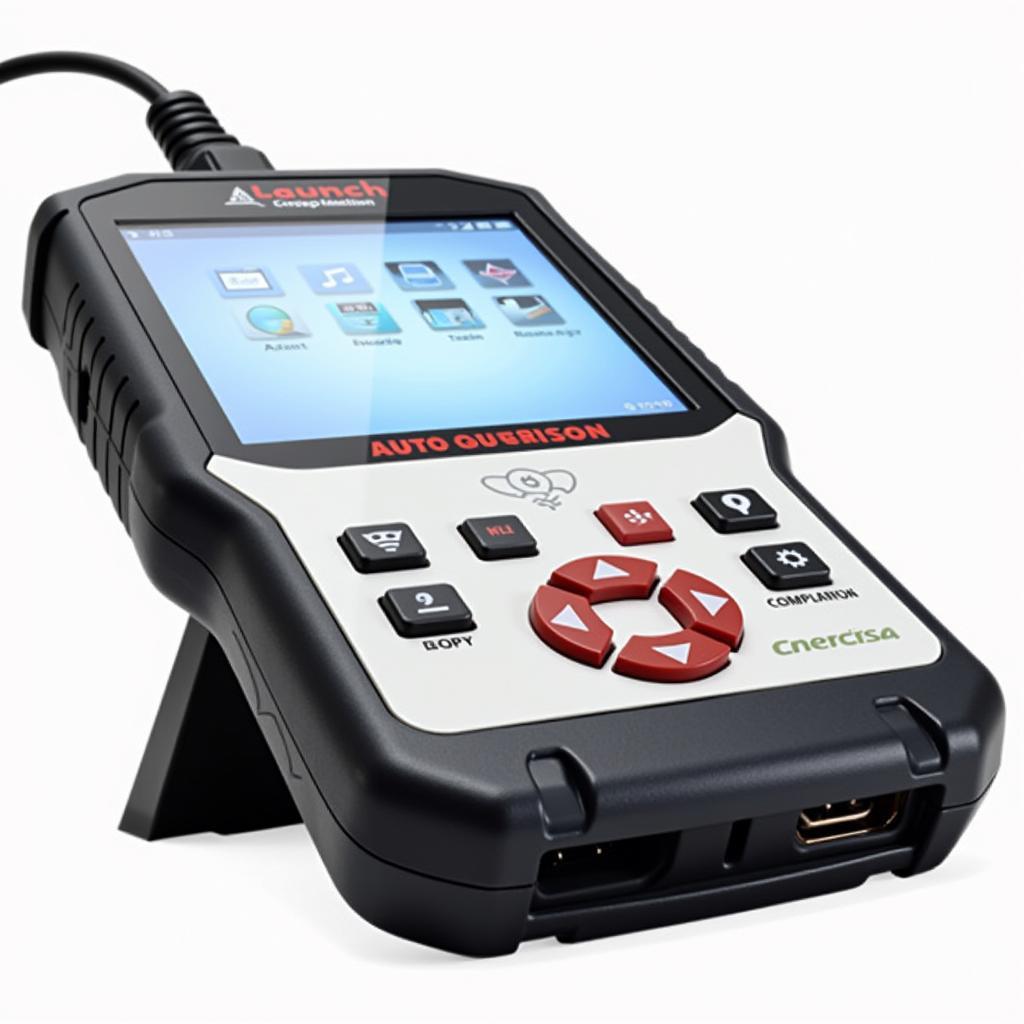Troubleshooting car problems often requires specialized software and a reliable diagnostic tool. If you’re a Mac user looking to streamline your car diagnosis process, opening your diagnostic tool on startup can save time and effort. This comprehensive guide will walk you through the steps to achieve this, whether you’re a car owner, a garage owner, or an automotive technician.
Understanding Diagnostic Tools and Their Importance
Before diving into the how-to, let’s briefly discuss the significance of automotive diagnostic tools.
Modern vehicles are equipped with complex electronic systems. When issues arise, pinpointing the root cause requires deciphering error codes and data generated by these systems. That’s where diagnostic tools come into play.
[image-1|diagnostic-tool-connected-to-car|Car Diagnostic Tool Connected|A car diagnostic tool plugged into a car’s OBD-II port, displaying diagnostic data on its screen.]
These tools act as a communication bridge between your Mac and your vehicle’s onboard computer, allowing you to:
- Retrieve and interpret diagnostic trouble codes (DTCs): These codes provide valuable clues about the nature of the malfunction.
- Read live data streams: Monitor parameters like engine RPM, coolant temperature, and oxygen sensor readings in real time to identify performance issues.
- Perform actuator tests: Command specific components, such as solenoids or actuators, to verify their functionality.
- Access advanced functions: Depending on the tool and vehicle, you might be able to perform tasks like key programming or module coding.
Choosing the Right Diagnostic Software for Mac
Selecting suitable diagnostic software is crucial for seamless integration with your Mac and diagnostic tool. Here are some popular options:
- OBD Auto Doctor: A user-friendly option compatible with various adapters and offering a range of features, including DTC reading, live data, and emissions readiness checks.
- Car Scanner ELM OBD2: This app supports a wide range of OBD2 adapters and provides real-time data, fault code diagnosis, and performance tracking.
- Piston Free OBD2: A free and open-source option for basic diagnostics, offering DTC reading, live data viewing, and the ability to clear codes.
When choosing software, consider factors like compatibility with your diagnostic adapter, desired features, ease of use, and user reviews.
Configuring Your Diagnostic Tool to Launch on Mac Startup
Let’s get to the heart of the matter – how to open your diagnostic tool automatically when your Mac starts up. Follow these steps:
- Connect Your Diagnostic Tool: Ensure your diagnostic tool is properly connected to your Mac’s USB port or via Bluetooth, depending on the tool’s connectivity options.
- Access System Preferences: Click on the Apple logo in the top-left corner of your screen, and select “System Preferences.”
- Open Users & Groups: Locate and click on the “Users & Groups” icon.
- Select Login Items: Click on the “Login Items” tab within the “Users & Groups” window.
[image-2|mac-system-preferences-login-items|Mac System Preferences – Login Items|A screenshot showcasing the “Login Items” tab within “Users & Groups” in Mac System Preferences.]
- Add Your Diagnostic Tool: Click on the “+” button below the list of login items.
- Choose Your Application: Navigate to the “Applications” folder, locate your diagnostic tool’s application, and select it. Click “Add” to confirm.
Once added to the login items list, your diagnostic tool is configured to launch automatically every time you start your Mac.
Troubleshooting Tips
While generally straightforward, setting up automatic startup for your diagnostic tool might encounter a few hiccups. Here’s how to address common issues:
- Software Not Launching: Double-check that the correct application is selected in the “Login Items” list. Ensure the application itself is working correctly by launching it manually.
- Connectivity Problems: If your diagnostic tool connects via USB, try a different USB port. For Bluetooth connections, ensure Bluetooth is enabled on both your Mac and the diagnostic tool.
- Conflicting Startup Programs: Numerous programs launching at startup can cause delays or conflicts. Temporarily disable other startup programs to see if it resolves the issue.
Expert Insights
“Setting up your diagnostic tool to open on startup is a time-saver, especially when dealing with intermittent car problems,” says John Miller, a senior automotive electrical engineer at ScanToolUS. “It ensures you’re always prepared to connect and diagnose without the extra steps of manually launching the software.”
Conclusion
Opening your diagnostic tool on Mac startup can significantly streamline your car diagnostics workflow. By following the steps outlined in this guide, you can ensure that your diagnostic software is always ready when you are, allowing you to quickly identify and address car issues.
If you need any assistance with diagnostic tools, software, or troubleshooting car problems, don’t hesitate to reach out to us. You can call us at +1 (641) 206-8880 or visit our office at 1615 S Laramie Ave, Cicero, IL 60804, USA.
FAQ
-
Can I use any diagnostic tool with a Mac?
Not all diagnostic tools are compatible with macOS. Check the tool’s specifications or manufacturer’s website to confirm compatibility before purchasing. -
Do I need a special cable to connect my diagnostic tool to my Mac?
Most diagnostic tools use a standard USB cable or connect wirelessly via Bluetooth. Make sure your Mac has the necessary ports or Bluetooth capabilities. -
Is it safe to leave my diagnostic tool plugged in all the time?
It’s generally safe to leave the tool plugged in, but it’s a good practice to disconnect it when not in use to prevent unnecessary power drain or potential electrical issues. -
Why isn’t my diagnostic tool detecting my car?
Ensure the tool is properly connected to both the car’s OBD-II port and your Mac. Try restarting your car and the diagnostic tool. -
Can I update the software on my diagnostic tool?
Many diagnostic tools offer software updates. Check the manufacturer’s website or the tool’s documentation for instructions on how to update the firmware or software.


